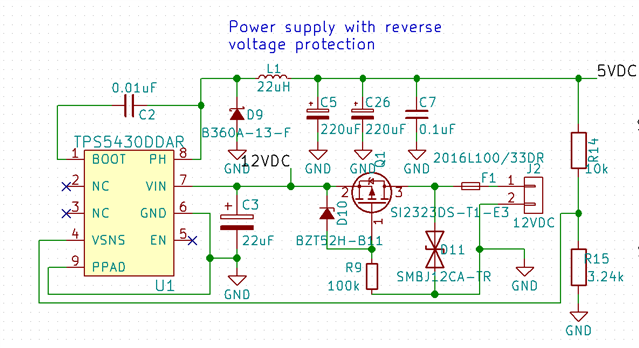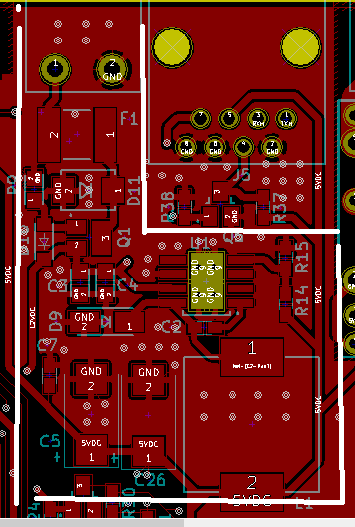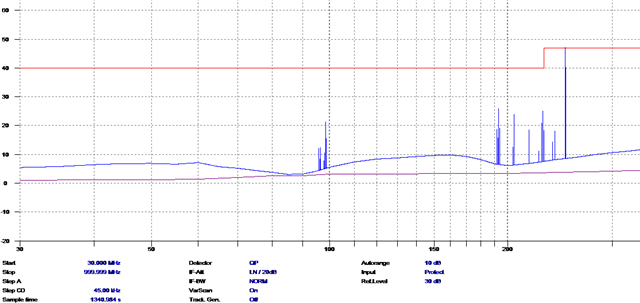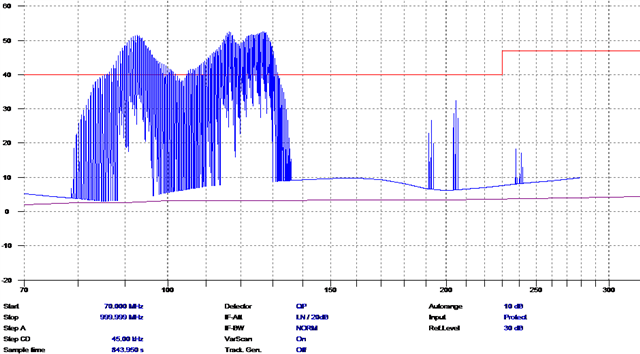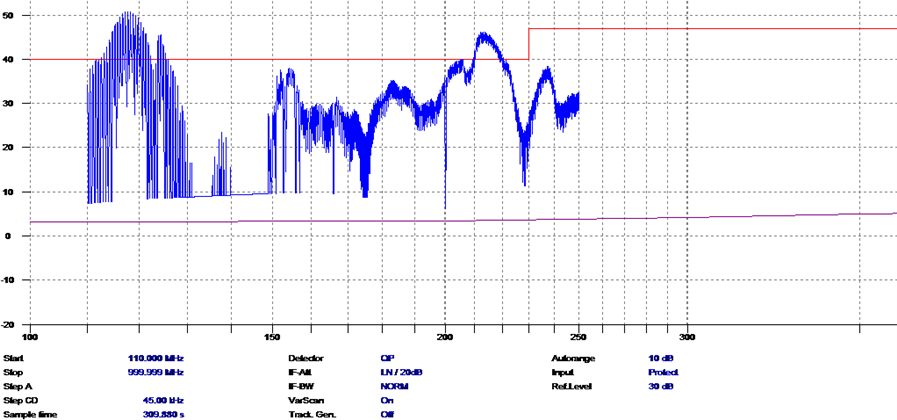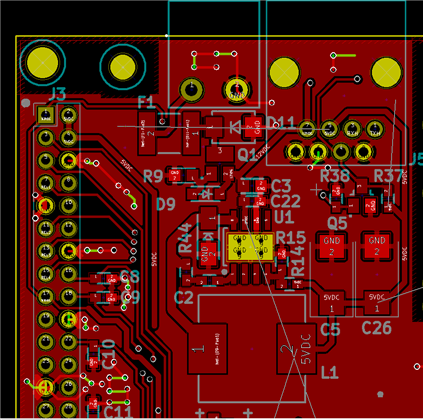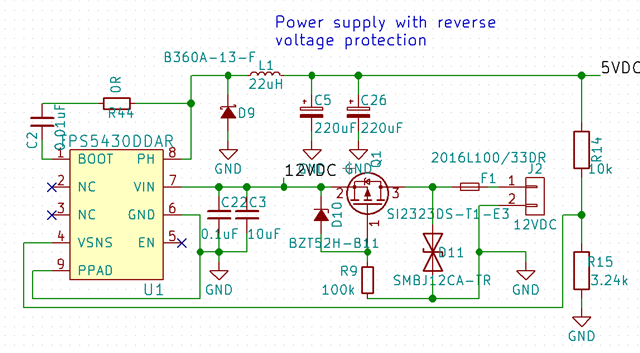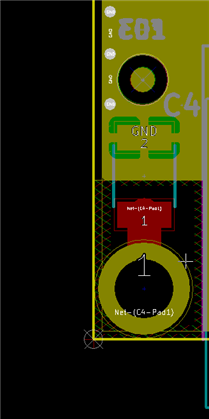Hello,
I use your TPS5430 DC/DC converter in my products. I went to certification house to measure radiated EMI. The results were bad, and there were large spikes above 40 dBuV(limit according to CISPR22). In the end, I found that the problem is in DC-DC converter because after connecting external 5V supply, the problem disappears and the results were fine.
How is this possible? I made layout according to your specification. Is there any way to solve radiated EMI?
Here is my schematic.
Kind regards


